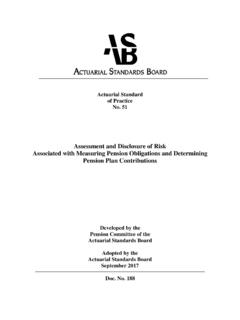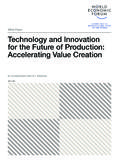Transcription of ©2017 The MITRE Corporation. ALL RIGHTS RESERVED.
1 Approved for Public Release; Distribution Unlimited. Case Number 17-2546 1 2017 The MITRE corporation . ALL RIGHTS reserved 2017 The MITRE corporation . ALL RIGHTS reserved . Approved for Public Release; Distribution Unlimited. Case Number 17-2546 i 2017 The MITRE corporation . ALL RIGHTS reserved Contents Executive Summary .. 1 Health Care Payment Learning & Action Network .. 1 Overview and Introduction to the 2017 APM Framework Refresh .. 3 Overview of Changes to the APM Framework and Its Supporting Principles .. 5 The Case for Reforming the Health Care Payment System .. 7 Purpose of the White Paper .. 10 Approach .. 10 Key Principles for the APM Framework .. 11 The APM Framework .. 22 Fee for Service with No Link to Quality & Value (Category 1).
2 24 Fee for Service Linked to Quality & Value (Category 2): .. 24 APMs Built on Fee-for-Service Architecture (Category 3): .. 25 Population-Based Payment (Category 4): .. 27 Conclusion .. 30 Stakeholders and the APM Framework .. 30 Appendix A: Category 3 Incentive-at-Risk APMs .. 31 Appendix B: APM Framework Refresh Advisory Group Members and Staff .. 35 Advisory Group Chair .. 35 Advisory Group Members .. 35 CMS Alliance to Modernize Healthcare (CAMH) Staff .. 35 Appendix C: Original APM Framework Work Group Members and Staff .. 37 Work Group Chair .. 37 Work Group Members .. 37 Appendix D: Other LAN Content .. 39 Appendix E: Principles for Patient- and Family-Centered Payment .. 43 Appendix F: About the CMS Alliance to Modernize Healthcare .. 45 Approved for Public Release; Distribution Unlimited.
3 Case Number 17-2546 1 2017 The MITRE corporation . ALL RIGHTS reserved Executive Summary The Health Care Payment Learning & Action Network (LAN) was created to drive alignment in payment approaches across the public and private sectors of the health care system. The CMS Alliance to Modernize Healthcare (CAMH), the federally funded research and development center (FFRDC) operated by the MITRE corporation , was asked by the Centers for Medicare & Medicaid Services (CMS) to convene this large national initiative. To advance the goal of aligning payment approaches, the Alternative Payment Model Framework and Progress Tracking Work Group (the Work Group ) was charged with creating an alternative payment model (APM) Framework (the APM Framework ) that could be used to track progress toward payment reform.
4 Composed of diverse health care stakeholders, the Work Group deliberated and reached consensus on many critical issues related to the classification of APMs, resulting in a rationale and a pathway for payment reform capable of supporting the delivery of person-centered care. The Work Group published the APM Framework White Paper in January 2016. Subsequently, a multi-stakeholder Advisory Group was convened to update the APM Framework and its principles based on developments that occurred since the original publication. This White Paper reflects that updated APM Framework. Although not part of the Work Group s explicit charge, this White Paper advances a working definition of person-centered care because it treats payment reform as one means to accomplish the larger goal of person-centered care.
5 This working definition rests on three pillars: quality, efficiency, and patient engagement. For the purposes of this White Paper, person-centered care is nominally defined as follows: care in which patients and their care teams form partnerships around high-quality, accessible care, which is both evidence-based and delivered in an efficient manner, and in which patients and caregivers individual preferences, needs, and values are paramount. Transitioning the health care system away from fee for service (FFS) and toward shared risk and population-based payment is necessary, though not sufficient, to achieve a value-based health care system. Financial incentives to increase the volume of services provided are inherent in FFS payments, Health Care Payment Learning & Action Network To achieve the goals of better care, smarter spending, and healthier people, the health care system must substantially reform its payment structure to incentivize quality, health outcomes, and value over volume.
6 Such alignment requires a fundamental change in how health care is organized and delivered, and requires the participation of the entire health care ecosystem. To enable these reforms, the Health Care Payment Learning & Action Network (LAN) was established as a collaborative network of public and private stakeholders, including health plans, providers, patients, employers, consumers, states, federal agencies, and other partners within the health care community. By making a commitment to changing payment models, by establishing a common framework and aligning approaches to payment innovation, and by sharing information about successful models and encouraging use of best practices, the LAN can help to reduce barriers and accelerate the adoption of alternative payment models (APMs).
7 Approved for Public Release; Distribution Unlimited. Case Number 17-2546 2 2017 The MITRE corporation . ALL RIGHTS reserved and certain types of services are systematically undervalued. This is not conducive to the delivery of person-centered care because it does not reward high-quality, individualized, and efficient care. By contrast, in many cases, population-based payments (including bundled payments for clinical episodes of care) can offer providers the flexibility to strategically invest delivery system resources in areas with the greatest return, to treat patients holistically, and to facilitate care coordination. Shared-risk payments, population-based payments, and other payment mechanisms are better suited than FFS payments to support the care delivery that patients value and incentivize the outcomes that matter to them.
8 Therefore, the health care system should transition toward shared-risk and population-based models. In this context, the updated APM Framework will be useful to establish a common nomenclature and pathway upon which progress can be measured and successful models shared. The updated APM Framework rests on eight principles which can be summarized as follows: 1. Changing providers financial incentives is not sufficient to achieve person-centered care, so it will be essential to empower patients to be partners in health care transformation.* 2. Reformed payment mechanisms will only be as successful as the delivery system capabilities and innovations they support.* 3. The goal for payment reform is to transition health care payments from FFS to APMs. While Category 2C APMs can be the payment model for some providers, most national spending should continue moving into Categories 3 and 4.
9 * 4. Value-based incentives should ideally reach care teams who deliver care. 5. Payment models that do not take quality into account are not considered APMs in the APM Framework, and do not count as progress toward payment reform. 6. Value-based incentives should be intense enough to motivate providers to invest in and adopt new approaches to care delivery, without subjecting providers to financial and clinical risk they cannot manage.* 7. APMs will be classified according to the dominant form of payment when using more than one type of payment. 8. Centers of excellence, accountable care organizations, and patient-centered medical homes are examples, rather than Categories, in the APM Framework because they are delivery systems that can be applied to and supported by a variety of payment models.
10 * - indicates revised or new principle With these principles in place, the Work Group began with the payment model classification scheme originally put forward by CMS, and subsequently reached a consensus on a variety of modifications and refinements. The resulting Framework is subdivided into four Categories and eight subcategories, as illustrated in the figure below (Figure 1). Approved for Public Release; Distribution Unlimited. Case Number 17-2546 3 2017 The MITRE corporation . ALL RIGHTS reserved Figure 1: The Updated APM Framework Overview and Introduction to the 2017 APM Framework Refresh A LAN Guiding Committee was established in May 2015 as the collaborative body charged with advancing the alignment of payment approaches across and within the public and private sectors of the health care system.










